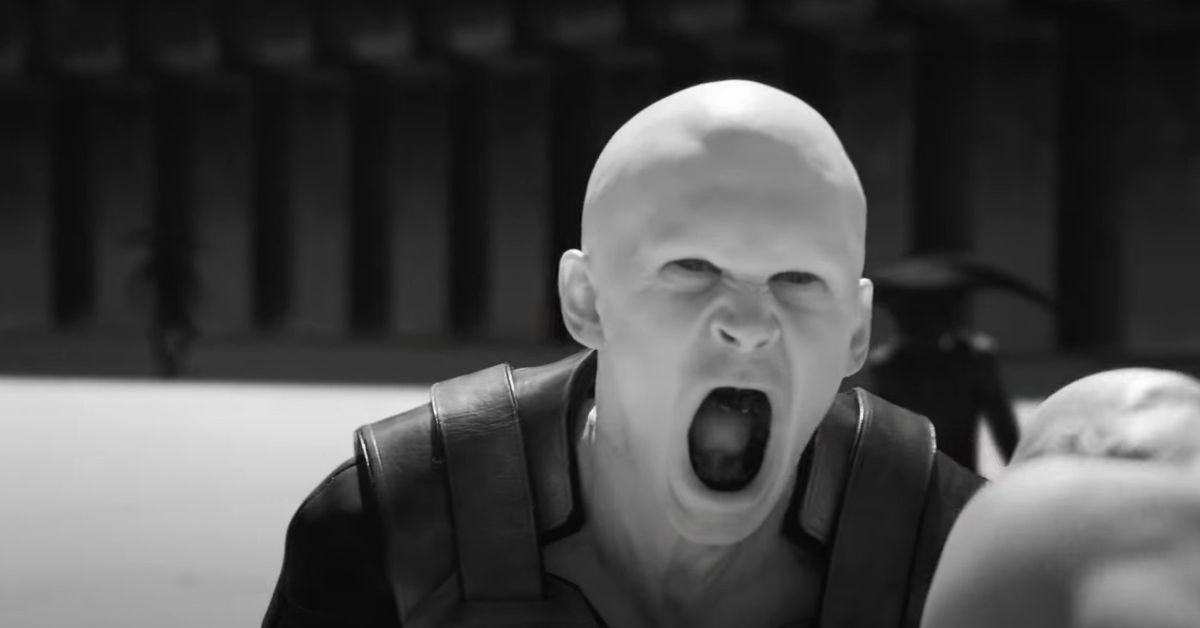Like Dune before it, Dune: Part Two is a feast for the eyes. But even in a movie full of tantalizing visuals, there’s one scene that stands apart: the starkly glowing Harkonnen arena.
Dune’s director of photography, Greig Fraser, employed special infrared, or IR, cameras to capture non-visual wavelengths of light and convert them into grayscale. The effect is immediately striking and was a highlight of Dune: Part Two’s early trailers, with Austin Butler in a shaved look that only made his pale flesh pop harder off the brutalist grays and the strange headdresses of the shrouded figures around him.
But as for why the Harkonnen arena battle looks that way, director Denis Villeneuve told Polygon that it was all about filling in the gaps that Frank Herbert left behind.
:no_upscale()/cdn.vox-cdn.com/uploads/chorus_asset/file/25296300/rev_1_DUN2_T3_0035r_High_Res_JPEG.jpeg)
Image: Warner Bros.
“I came up with this idea as I was writing the screenplay,” Villeneuve said, “this idea of having a black-and-white world, which I love. And of course, Greig Fraser went on board big time with it. He brought this idea that I am still so happy with, which is the IR cameras, where it gives a kind of eerie, milky, black and white where the skin became translucent.”
Frank Herbert never established much information about the Harkonnen homeworld, called Giedi Prime, other than that it had been industrialized into an almost complete wasteland. To Villeneuve, the Harkonnen rejection of the natural world was a mirror for Herbert’s exploration of the Fremen, a culture deeply rooted in its native environment — and therefore equally worth exploring.
“I love how Frank Herbert [shows how] the psyche of the tribes of the people are influenced by the landscape. If you want to learn about the Fremen, you just have to learn more about the desert and it will give you insight about their way of thinking, their way of seeing their world, about their culture, about their beliefs, about their religion.”
But with far fewer Harkonnen details to work with, Villeneuve was forced to improvise, and like any filmmaker, he settled on using light to tell the story — specifically the light from Giedi Prime’s sun.
“I wanted to find something that had the same evocative power and the same cinematic power for the Harkonnens,” he said. “I wanted to be generous with their world and make sure that it will be singular, and it will inform us about where their political system is coming from; where their sensitivity, their aesthetic, their way, their relationship with nature [is coming from]. I thought that a sun that will subtract colors instead of revealing them will say a lot about their ways of behaving and thinking.”
In a film full of vast desert vistas, charging sandworms, and spaceships shaped like massive platonic solid paperweights, the Harkonnen arena scenes still stand out. It’s a visual twist that’s striking not just for how it warps the scene’s environment, but for how it warps the human figures within.
“You can see the veins of the character,” Villeneuve said, “and the eyes are becoming very piercing and eerie, to where it’s like it transformed characters into vampires and witches, something that I felt the Harkonnens are very close to. It was a way to make their world more rich and unique.
“Of course,” he laughed, “aesthetically, I love black and white, so it was a pretext to go there.”

